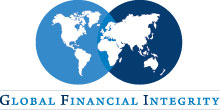
The Meaning of the FinCEN Files
By Katherin Alfonso, Trevor Sutton, June 23, 2022
First, the bureaucratic actors tasked with policing the world’s financial plumbing are simply overwhelmed. FinCEN received about 2.3 million SARs in 2019 alone. Even for a well-resourced FIU (FinCEN has only about 300 staff), this would be an immense quantity of data to sift through and analyze. Furthermore, as the journalists behind the FinCEN files observed, the “narrative” element of SARs, which sets out the reasons the transaction is being reported, vary greatly in detail and scope and don’t lend themselves to software analysis. As a result, even highly troubling indications of wrongdoing are frequently overlooked or ignored. Law enforcement officials who work on corruption-related crimes, such as those in the Justice Department’s Fraud Section, are comparatively better staffed relative to their missions, but they depend on reporting from the private sector and do not have jurisdiction over all of the financial crime that involves U.S. institutions.
Second, as with other efforts to curb risk in the financial system, the U.S. approach to rooting out illicit finance has emphasized regulatory compliance over criminal penalties and other sanctions that might actually deter institutions from engaging in undesired behaviors. What is perhaps most striking about the FinCEN Files is how often financial institutions continued to process transactions for clients whose suspicious behavior triggered SARs. In practice, many of the institutions appear to have viewed formal compliance with regulatory reporting requirements as immunizing them from any penalties associated with the transaction itself. And for good reason: More often than not U.S. law enforcement appears to have taken no action in response to SARs that reflected a high likelihood of criminal activity. This incentive structure has proven self-reinforcing: Covered entities are inclined to report any activity that could conceivably justify an SAR rather than focusing on the most genuinely concerning transactions, inundating FinCEN with a glut of low-salience, poor quality data to sift through. In Europe and other financial centers, which prosecute far fewer white-collar criminals than American authorities, the situation is, if anything, much worse.
Third, information exchange across national borders, while improved relative to even a decade ago, is still cumbersome, slow, and riddled with inaccuracies and dead-ends. Investigations into complex financial crimes, which usually involve complex cross-jurisdictional transactions and layers of shell companies and other vehicles designed to obscure the real beneficiaries of capital flows, tend to fall victim to bureaucratic inertia: Even where governments are in principle amenable to sharing sensitive financial data, they may not do it quickly or consistently enough for overtaxed investigators to follow up on even a fraction of the evidence of malfeasance that crosses their desks. Furthermore, even where financial data is made available in a timely and responsive manner, the underlying integrity of that data is only as good as the due diligence efforts of the banks that collect it. As a result, dirty money flows through (but rarely comes to rest in) countries with lax oversight, where financial institutions face few repercussions for failing to adequately investigate the ultimate beneficiaries of the transactions they facilitate.
One striking example of the latter problem, documented in the FinCEN Files, is the well-known case of the Estonian branch of Danske Bank, Denmark’s largest bank. As has been reported on extensively, Danske allowed billions of dollars linked to Russian intelligence services and even the family of Vladimir Putin to transit its accounts in what has come to be known as the “Russian Laundromat.” What was less clear, until now, was the central role played by UK shell firms in the Russian Laundromat operation, whose dubious provenance and questionable—something outright false—declarations of their beneficial owners and business activities went unquestioned by Danske’s Estonian bankers. As a result, thousands of suspicious transactions linked to the Russian Laundromat went largely overlooked until a whistleblower inside Danske came forward with explosive revelations.
Fourth, notwithstanding eye-popping headlines about large fines, U.S. and other national authorities have tended to go wobbly when it comes to holding financial institutions accountable. In pursuing civil and criminal actions against banks that have abetted foreign corruption, money laundering, and other financial crimes, U.S. law enforcement in particular has overwhelmingly favored quasi-settlements known as deferred prosecution agreements and non-prosecution agreements. Such resolutions avoid individual accountability for negligent executives, let alone criminal sanctions against the entity itself, with predictable results: Banks and other institutions treat breaches and associated penalties as the cost of doing business, and are disinclined to cut off relationships with lucrative but high-risk clients.



